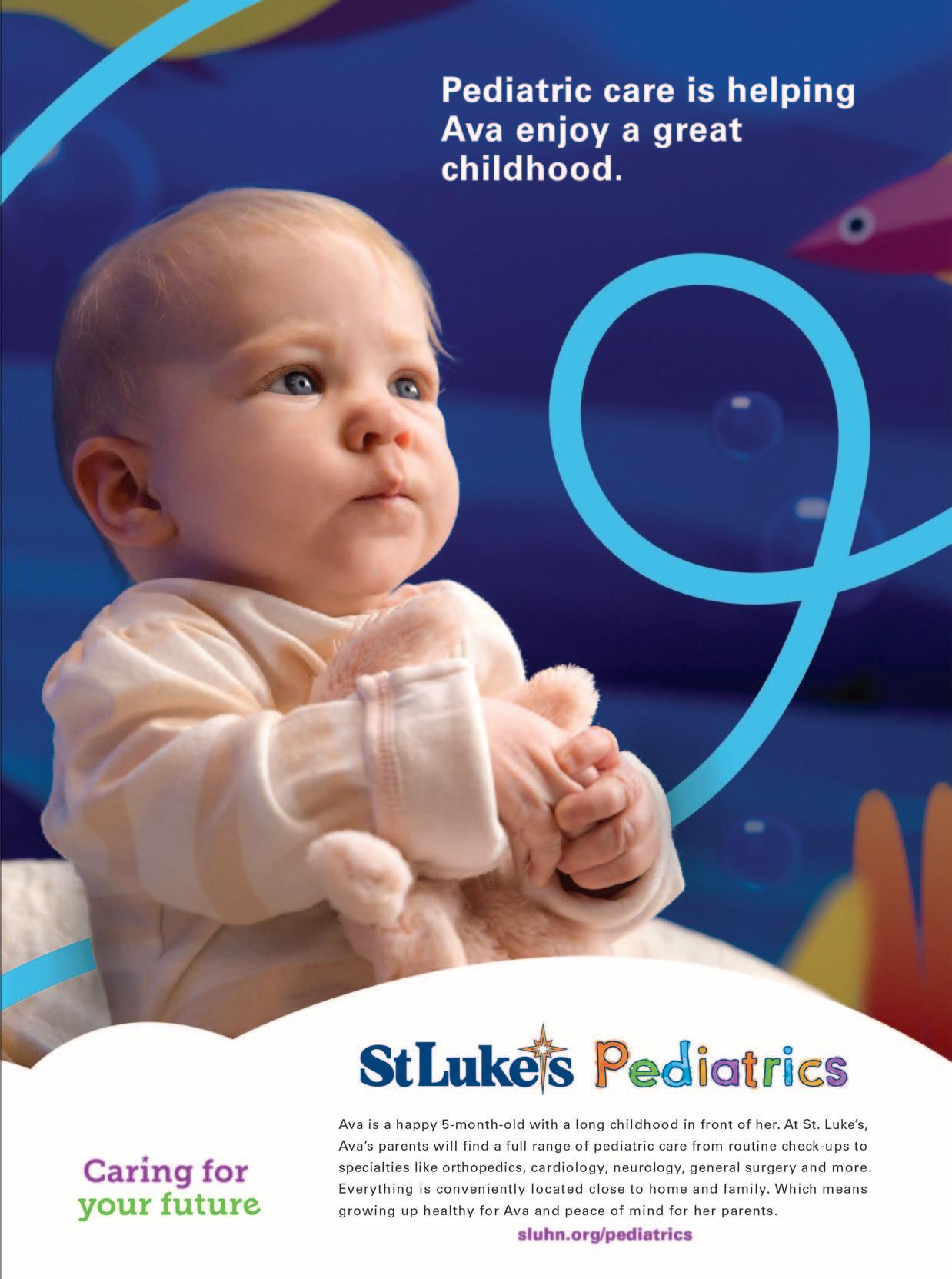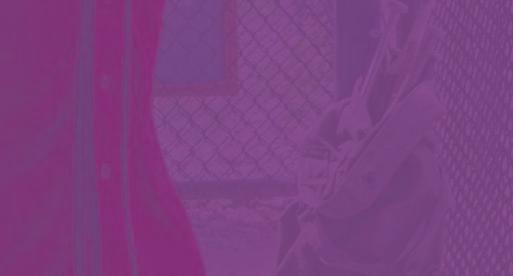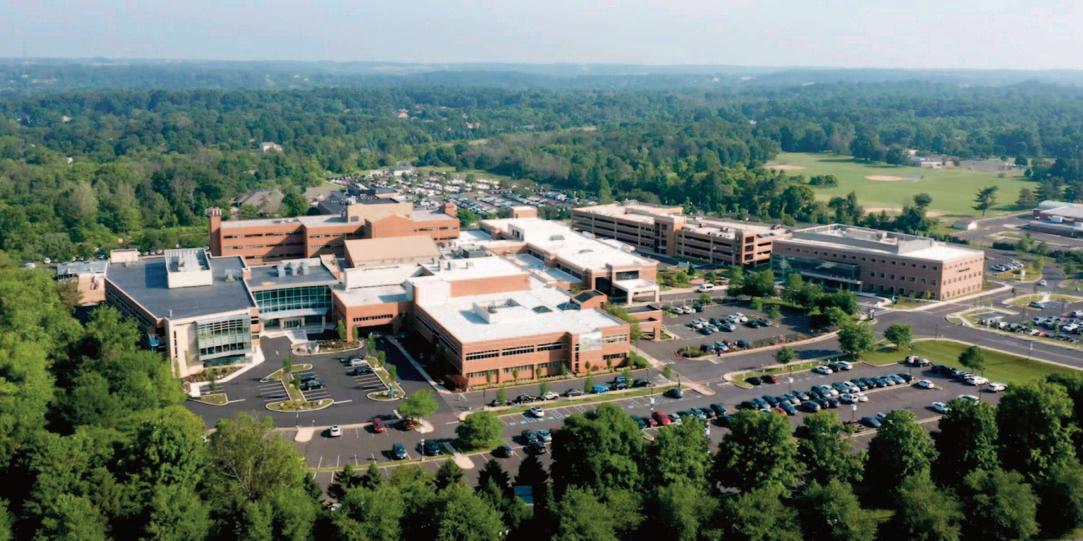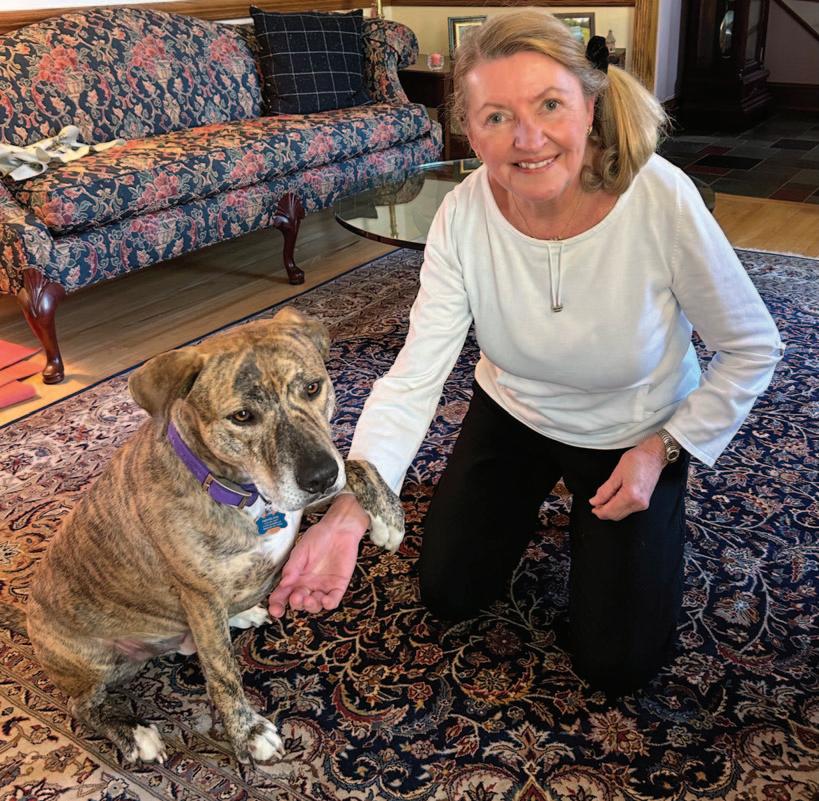
5 minute read
Adaptation
Susan Sandor was sitting under an umbrella by the pool reading when a cascading series of events involving a long leash, a fall and an excruciatingly painful injury caused life changing consequences
By Susan Sandor
Humans have an extraordinary ability to adapt to any situation: small, massive or anywhere in-between. I am here to share my latest round of adaptations, which were all epic for me.
This past Labor Day weekend, I was hosting a pool party for my family. There was food aplenty prepared for munching all day until dinner time. After all, it is the big hurrah—an end of summer thing. Everyone was in the pool on that hot September Sunday. Except me. I was sitting under an umbrella reading, and my sister’s dog, Chase, was on a long leash tethered to a nearby post. Unbeknownst to me, my sister decided to give the dog more leeway by lengthening the leash with a neon green tie-out cable that was thinner than a phone charging wire.
Then the chant from the people in the pool went out for “doodles, doodles.” Well, doodles are irresistible three cheese canapes served on baguette rounds topped with tomato. My husband created this snack way back when the now adult nieces were tiny tots. Of course, I was eager to accommodate and jumped from my chair to pop them into the oven. At a split second too late, I saw the neon green cable, which the dog wrapped around the table, between my big toe. I took a flying leap into the air before coming down on the sunbeaten bluestone patio like Humpty Dumpty as everyone looked on in horror.
911 was called as I lay screeching in anguish with my left arm splayed out. The EMTs seemed to take forever to arrive. I guess that when experiencing the most savage pain of a lifetime it could feel like forever. Meanwhile, I was being doused with buckets of pool water as I was being fried on the bluestone in my bathing suit. Getting me on a stretcher and into the ambulance while still crying out in pain my arm could not (would not) bend. With permission, they gave me the maximum dose of fentanyl intravenously, but this opioid did nothing to quell the pain.
In the emergency room, I was still screaming in agony and given morphine and oxycodone. Still no relief. I’m drug sensitive but none of this had any effect. One might think it would knock a person out of her misery but nothing touched the pain or put me to sleep. I was admitted and an orthopedic surgeon visited the following day after reviewing my x-rays and MRI. My shoulder wasn’t just fractured, it was shattered. This surgeon was not eager to do the operation. I felt his reluctance and was grateful for his honesty, but my two-day hospitalization had yielded zilch. This gave me the opportunity to meet with a renowned surgeon, a doctor’s doctor, who could make no promises given the severity of the injury. He couldn’t say for sure until I was on the operating table if I could be put back together again with pins, screws and rods or if I would need a prothesis. Surgery was scheduled for 11 days after the injury. This meant 11 days of agony.
As I lay crying prior to being taken to surgery, the anesthesiologist asked what my greatest fear was. My response was “more pain!” In addition to general anesthesia the good doctor inserted what is called a nerve block near the surgical site, which made my shoulder and arm completely numb. Reliable sources say that a nerve block may last 24 hours. My anesthesiologist must have been extremely generous with the dosage for which I am grateful in spite of having my arm dangle like dead meat hanging from my shoulder for nearly a week. The pain was bearable although I was still suffering audibly.
The surgeon said my rotator cuff was in shreds and had to be removed. It was simply a worthless piece of anatomy. The doctor performed a complex procedure called a reverse total shoulder replacement. I am left without a rotator cuff, which means that the deltoid muscles need to learn to do the job of what the rotator cuff did. It’s a neuromuscular issue. My brain was telling my shoulder and arm to pick up a plate for instance or to reach for a fork but what happened was nothing. The muscles sort of had a deaf ear.
Post-surgery was no picnic. I had a complete loss of independence. A sling was worn day and night for six weeks. A barrage of people descended upon me— visiting nurses, a physical and occupational therapist, and a home health care provider. And my sister and friends came—one who showered and shampooed me in her bathing suit. Others drove me to doctor appointments, the pharmacy, supermarkets and eventually to outpatient physical therapy three times a week. It took a village of loving friends to get me to where I needed to go and to heal. And for that I am eternally grateful. Adapting to odd routines was a task but I did adapt. Learning to bathe with one arm, eat with one hand, or to scrub a pot took adaptability. Simple tasks like plugging a phone into a charger, zipping a zipper and pulling on pants took strength that I didn’t have but the saving grace was adaptability. The new way of doing things was often clownish and ridiculous but successful in a bizarre manner. All forms of life have some degree of adaptability and humans are probably the most adaptive of all species if we rule out the cockroach.
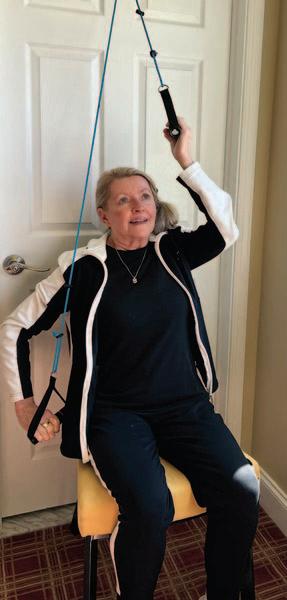
My surgeon recently said I will not regain full mobility or function. And that it will be an entire year before my shoulder and arm feel like they are truly a part of me. Currently it is nine months. With making physical therapy a top priority nearly every day of the week I am determined to see if he is mistaken. Actually, I’m aiming to prove him wrong. A singular goal was to dive into the pool this spring for my daily swim without listing to one side like a dying goldfish in a bowl. If you’ve ever had a pet goldfish you know what I mean. I am thrilled to say that getting into the water was proof that I was a shark rather than a goldfish!
Four months before my injury, I buried my beloved husband, Herb on what would have been our 35th wedding anniversary. Heck, I will be adapting for a long, long time.v

ST LUKE’S GASTROENTEROLOGY IN HARLEYSVILLE
St. Luke’s University Health Network recently opened a new office for gastroenterology patients at 142 Clemens Road in Harleysville. “Opening a Harleysville practice was a high priority for us.We have many patients in the community seeking our care and wanted to bring their care closer to home,” says Scott Siegfried, St. Luke’s University Health Network’s (SLUHN) Service Line Administrator of Gastroenterology.
“The St. Luke’s Gastroenterology team, regionally comprised of providers, formerly known as Buxmont Gastroenterology, used to have a presence in the Harleysville community. It is important to bring their great care back to the community.”

New to the practice is Christopher Hibbard, DO, who is certified in gastroenterology by the American Board of Internal Medicine and specializes in esophageal studies. Dr. Hibbard is the former Director of Esophageal Disease at Einstein Medical Center Philadelphia.
Dr. Hibbard joined St. Luke’s because of the Network’s support for gastroenterology.


“It’s evident that St. Luke’s values the expanding technology and subspecialties of GI, and I wanted to be a part of its new growth,” he explains.
Dr. Hibbard earned a B.A. in biologic basis of behavior with minors in chemistry and bioethics from the University of Pennsylvania before receiving his medical degree from the Philadelphia College of Osteopathic Medicine.
“The world of gastroenterology tends to be quite a personal one, so the first thing I do with patients is establish a solid rapport,” Dr. Hibbard says. “The fact that I myself have reflux disease allows me to connect to my patients in a unique way because I know exactly what they’re experiencing.”
St. Luke’s Gastroenterology also has locations at St. Luke's Hospital – Quakertown Campus and at St. Luke’s Gastroenterology–Buxmont 1107 Bethlehem Pike in Sellersville.
Dr. Hibbard is accepting new patients. For an appointment with him or other providers at St. Luke’s Gastroenterology or network wide, call 484-526-6545.

